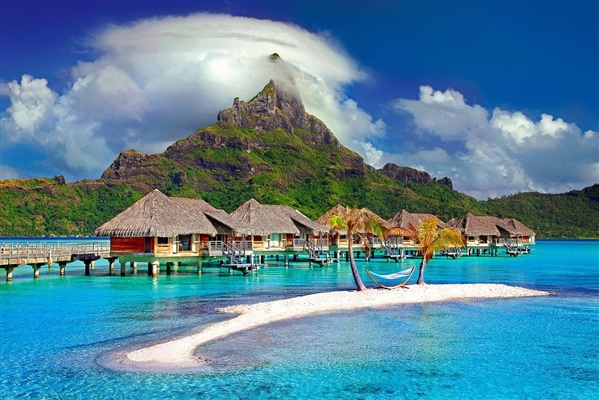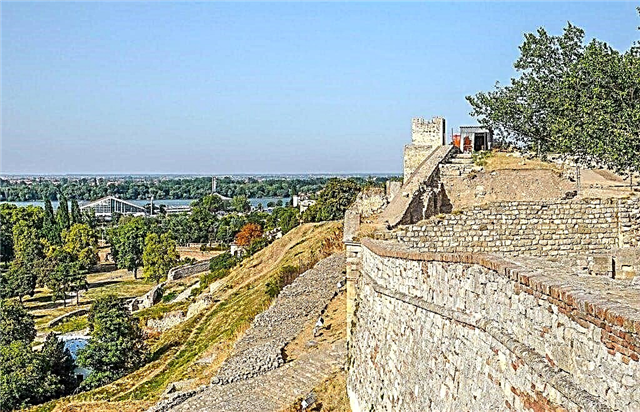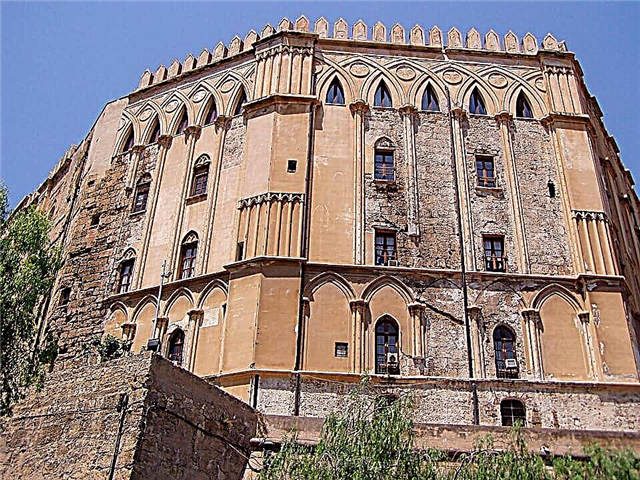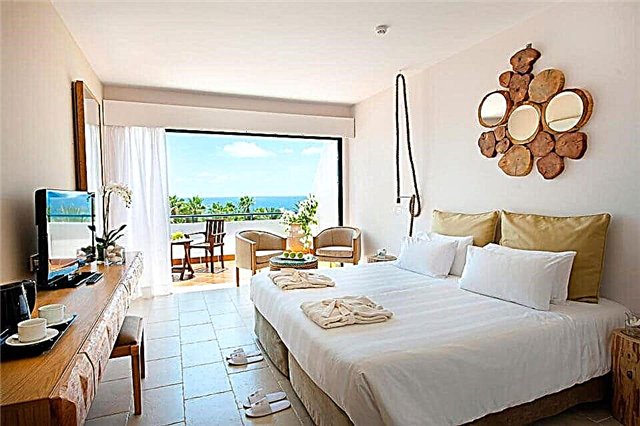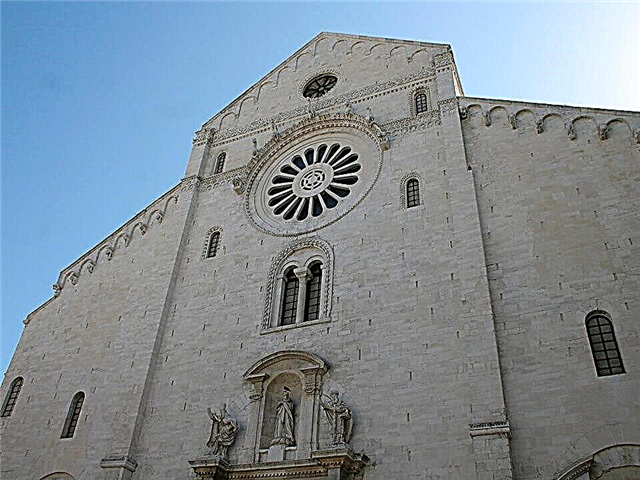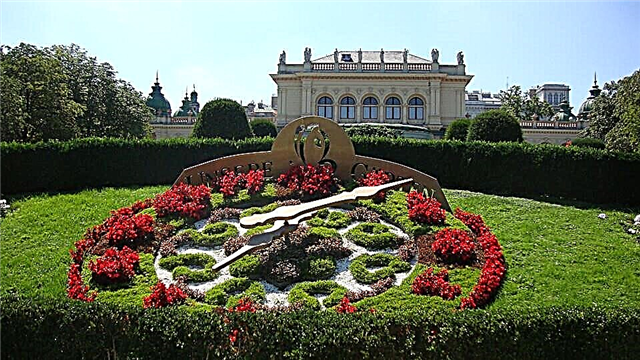The miniature St. Nicholas Church has been standing in the city center since the 1830s. This graceful chapel is a picturesque part of the historical buildings of Kostroma and took the place of the former Bread Building of the old shopping arcade. It is surrounded by buildings that used to be shops and taverns. Today the picturesque St. Nicholas Chapel has been restored and is visited by both believers and tourists.
Milky Mountain
The historical center of the city encompasses many notable places of Kostroma. One of them is Milk Mountain. This is the name of the street laid perpendicular to the Volga from the embankment (May 1 street) to the monument to Ivan Susanin on the beautiful and representative Susaninskaya square.

View of the northeastern facade of the chapel
In the 80s of the 18th century, an urban planning plan for regular development was approved in Kostroma, according to which a new street was designed. It was supposed to connect the central city square, now bearing the name of Ivan Susanin, with the Volga embankment. This "Parade Entrance" to the city from the side of the river was named Yekaterinoslavskaya Street. On both sides, the buildings were lowered and picturesque to emphasize the splendor of the buildings on the main square. That is why the Nikolskaya chapel was not made large, but built as a miniature temple.
The not long street had a noticeable slope towards the river, and therefore the name "mountain" was immediately assigned to it. Today it is very pleasant to walk here, since many places offer an excellent perspective of the Volga and the development of the opposite bank.

The street began to be called “Milk Mountain” since the end of the 19th century, since milk, cottage cheese, cheese and sour cream were always traded along it. These products were brought to the city for sale by residents of the right-bank settlements - Pantusova, Gorodishche and Selishch. Every morning they crossed over to the left bank of the Volga and exhibited their goods "along the mountain."
Temple history
The place where the Nikolskaya chapel now stands has always been one of the most populous. There were trade rows where they sold kvass, gingerbread, flour, various pastries and tar. On the street there was a trading exchange and a tea-dining room and a shop selling salt were received. And in 1801 a spacious Bread Building was built. It was in its place that a small rotunda-chapel was erected in the 1830s.

View of the chapel from Molochnaya Gora street
It is believed that the author of the architectural design of the chapel was the provincial architect Pyotr Ivanovich Fursov. But exact information about this has not been preserved. In addition to this small temple, the Fursovs built the buildings of the Fire Tower and the Guardhouse that have survived to this day, which stand on the modern Susaninskaya Square. This architect also designed some other Kostroma buildings that are recognized today as architectural monuments: Melochnye, Rybnye and Meat Ryadi, Moscow Outpost and the House of the Cathedral Parable. P.I. Fursov also took part in the reconstruction of the governor's house, Government offices and the building of the city gymnasium.
During the years of Soviet power, the Nikolskaya chapel was closed for believers, its church head was dismantled, and the premises were used for trade. In the late 1970s, restoration work was carried out by Kostroma craftsmen in the former church, however, the chapel building was again continued to be used as a shop. And only in 1995, the local diocese achieved the return of the church to the faithful.

Architecture and interior decoration
In the original architectural design, executed in the style of mature classicism, the chapel was shaped like a rotunda. But later it was rebuilt.
The decor of the temple is very laconic. Openwork gratings are installed on its windows, but there are no platbands. The entrance to the chapel and its façade are framed by austere columns. But, despite the almost complete lack of decorations, the temple is very beautiful. Graceful, verified proportions and a picturesque location give the iconic building a special flavor and make the chapel a popular tourist attraction in Kostroma.
The current state of the temple and the visiting regime

Chapel entrance
St. Nicholas Chapel is an active Orthodox church, and differs from ordinary churches only in the absence of an altar. The chapel on Molochnaya Gora is a courtyard of a nunnery, which is located in the village of Troitsa, Nerekhta district, Kostroma region. The cult building has been completely restored and is popular not only among believers in Kostroma, but also among travelers making their own routes through the cities of the “Golden Ring” of Russia. Anyone can get inside this architectural monument.
How to get there
The chapel is located on the street. Milk Mountain, 3A. It is located next to the Regional Museum of Nature and the Museum of the Snow Maiden.
By car. The road from the capital to Kostroma takes 4.5-5 hours (346 km) and runs along the Yaroslavl highway and the M8 highway (Kholmogory). In Kostroma on the road bridge you need to move to the left bank of the Volga and immediately turn left - on the street. Lower Wild. On it you need to get to the Central Park and go around it along the streets of Chaikovskogo and 1 May from the south (from the Volga). The chapel is located on the street. Molochnaya Gora, which leads from the embankment (May 1 st.) Towards Susaninskaya Square. The temple stands not far from the monument to Ivan Susanin.

By train or bus. From the Yaroslavsky railway station to Moscow trains reach Kostroma in 6.04-6.35 hours. In addition, from the Central Bus Station of the capital, located near the Shchelkovskaya metro station, you can get to Kostroma by regular buses (7 trips a day). This journey takes 6.50 hours. The Kostroma bus station is 1 km away from the railway station. You can get to the chapel around the city by buses No. 1, 2, 9, 10, 14, 14a, 20, 21, 25, 26 and route taxis No. 1, 2, 4, 14, 19, 26, 38, 47, 48, 49, 50, 51, 57, 66, 76 (stop "Voskresenskaya Square").
Attraction rating:


